From the advent of the first Vietnam taxi businesses in the 1960s to the recent rise of ride-hailing services such as Grab and Gojek, Vietnam’s taxi industry has come a long way.
Many taxi services are now available to tourists and locals, ranging from traditional cab companies like Mai Linh and Vinasun to emerging market players like Be Group.
Navigating Vietnam’s taxi sector can be difficult with so many options. In this post, we’ll go through the many types of taxis accessible in Vietnam and provide insights into the country’s taxi industry.
See more: Discover Vietnam Transportation – Gateway to Beauty
Contents
If you choose traditional Vietnam taxi
Traditional taxis such as Mai Linh and Vinasun have long been a part of Vietnam’s taxi industry. These businesses operate a huge fleet of well-maintained vehicles and use expert drivers, making them a dependable and safe means of transportation.
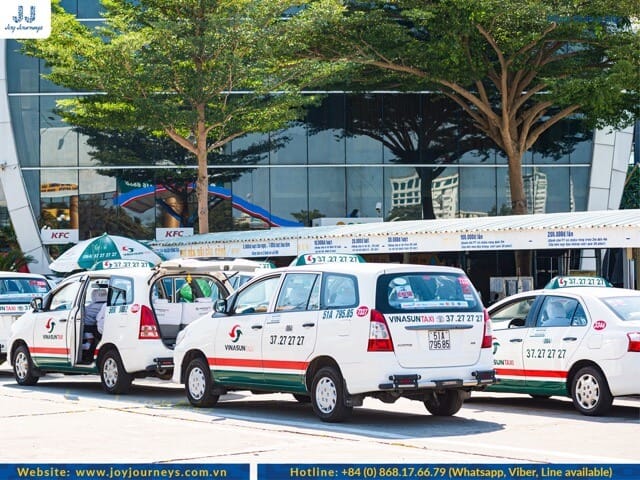
One of the primary benefits of choosing traditional taxis is that they are readily available and straightforward to hail on the street. They also provide fixed charges, which may be less expensive than ride-hailing services during busy hours. Traditional taxis, on the other hand, can be less convenient than ride-hailing services because clients may have to wait longer for a cab to arrive.
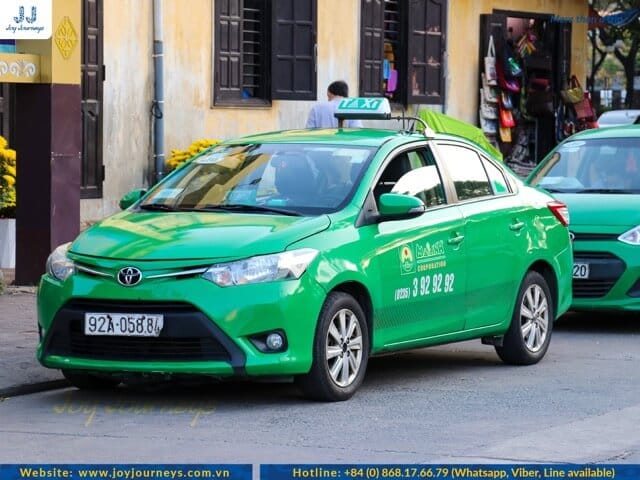
In terms of cost, the average price of a traditional Vietnam taxi is around 15,000 VND per kilometer. This means that a 10-kilometer ride would cost approximately 150,000 VND (around $6.50). However, prices may vary depending on the Vietnam taxi company and the location, so it’s always a good idea to confirm the price with the driver before starting your journey.
You can see the details of how to calculate here.
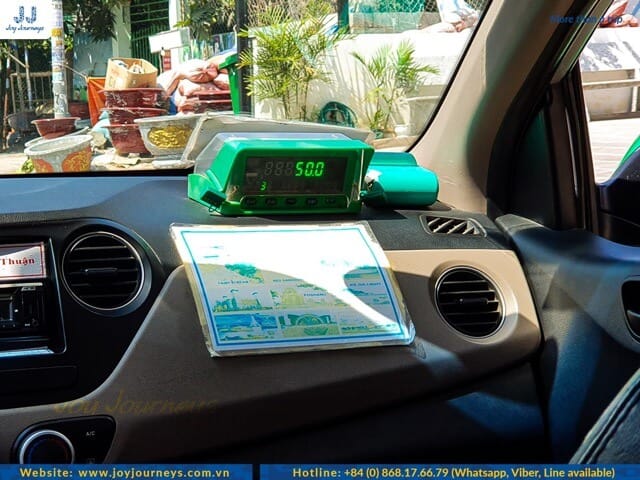
Aside from Mai Linh and Vinasun, there are other traditional Vietnam taxi businesses in Vietnam. Taxi Group, ABC Taxi, and Hanoi Taxi are well-known traditional Vietnam cab firms in the country.

Overall, traditional taxis like Mai Linh and Vinasun continue to be popular in Vietnam and offer an affordable and reliable option for locals and tourists alike.
Even though there is no Uber in Vietnam, calling a car is still very easy through the Grab application.
The Fast and the Furious: The Benefits and Risks of Taking a Motorbike Taxi in Vietnam
Motorbike taxis, often known as “xe om,” are a popular mode of transportation in Vietnam. They are typically operated by individuals who transport passengers on their motorbikes. While motorbike taxis can be a convenient and inexpensive method to get around, there are some concerns to be aware of.
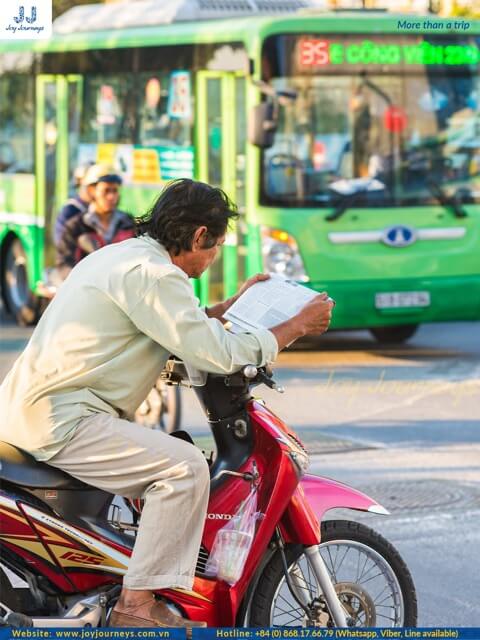
One of the main benefits of using motorbike taxis is that they are often faster and more efficient than traditional taxis, particularly in heavy traffic. They can also be more affordable, with prices ranging from around 10,000 to 20,000 VND per kilometer.
However, while considering a motorbike taxi, it is vital to consider safety concerns. Motorbike accidents are widespread in Vietnam, and improperly prepared passengers are at risk of injury. It’s critical to wear a helmet and ensure the driver is wearing one. Additionally, passengers should be aware of the driver’s experience level and weigh their comfort level before boarding a motorbike taxi.
While motorbike taxis can be a quick and cost-effective choice, it is critical to emphasize safety and take adequate precautions when employing them.
If you want to experience Vietnamese traffic yourself, you can rent a motorbike.
Vietnam’s Eco-Friendly Green Taxis
Green taxis, also known as eco-taxis or natural gas taxis, are taxis that run on compressed natural gas (CNG) rather than regular gasoline or diesel fuel. These taxis are considered more environmentally friendly because CNG emits fewer emissions than gasoline or diesel.
Green taxis are becoming increasingly popular in Vietnam and may be found in major cities such as Hanoi and Ho Chi Minh City. According to the Vietnam News Agency, there were approximately 16,000 green taxis operating in Vietnam as of 2020
However, green taxi availability and coverage may still be limited in some areas, particularly rural or remote areas. Furthermore, because CNG refueling facilities still need to be improved in Vietnam, ensuring that green cabs can access gasoline may be difficult.
The electric car taxi is another eco-friendly taxi that is gaining popularity in Vietnam. These vehicles run on electricity and emit no pollutants, giving them a greener option than CNG-powered taxis.
Electric car taxis are still relatively new in Vietnam but are gaining traction. In Ho Chi Minh City, for example, various companies, including Mai Linh and Vinasun, provide electric car taxi services.
VinFast, a subsidiary of Vietnam’s Vingroup, just launched its own electric taxi services in Hanoi and Haiphong. By 2023, the business already had a fleet of 10,000 electric vehicles in Vietnam, including taxis and personal cars.
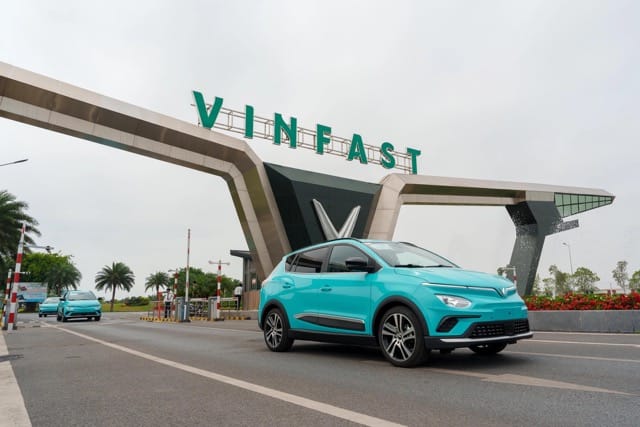
VinFast’s electric taxi, called the VinFast VF e34, has a range of up to 300 kilometers on a single charge and can be charged up to 80% in just 40 minutes using fast-charging technology.
VinFast’s entry into the electric taxi market in Vietnam is seen as a significant step towards reducing emissions and improving air quality in the country’s cities.
The Benefits and Risks of Using Taxi Apps in Vietnam
In recent years, Vietnam taxi applications have grown in popularity in Vietnam, providing users with a quick and efficient way to book and pay for journeys.
Grab, Be, and Gojek (Gocar) are among the best taxi apps in Vietnam.

To use a taxi app in Vietnam, first, download the application to your smartphone and set up an account.
You can then enter your pickup location and destination, and the app will calculate your anticipated fee and wait time. When you confirm your reservation, a nearby driver will be alerted and arrive to pick you up.
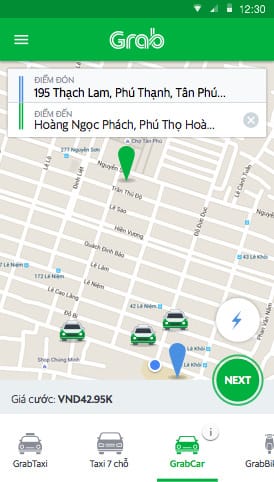
One of the primary benefits of using taxi apps in Vietnam is that they provide a convenient and dependable method of booking and paying for rides.
You can quickly track your driver’s location and expected arrival time, and there’s no need to haggle over fares or carry cash.
Taxi applications also provide a variety of payment alternatives, such as credit cards and mobile wallets, which makes it easier to pay for journeys.
Another benefit of using taxi apps is that they frequently offer better safety measures than traditional cabs.
Most taxi applications in Vietnam, for example, require drivers to go through background checks and safety training, and passengers may evaluate drivers and report any safety concerns.
However, there are several disadvantages to using cab applications. One of the most severe problems is surge pricing, in which rates can skyrocket during peak hours or high demand. This can increase the cost of rides and make them less affordable for some passengers.
Another concern is that some taxi apps may lack proper insurance coverage or driver background checks, which could lead to safety difficulties.
Furthermore, some drivers may be unfamiliar with the area and rely too heavily on GPS, resulting in lengthier trip times or improper routing.
Overall, taxi apps provide a quick and dependable method of booking and paying for journeys in Vietnam.
However, it is critical to be aware of the risks and use caution when using these services. Comparing rates and safety features between apps is also a good idea to ensure you get the finest service possible.
To conveniently travel between tourist destinations, air transport is a more convenient choice.
Conclusion
Vietnam has various types of taxis, including traditional Vietnam taxi, natural gas, and electric taxis. Traditional Vietnam taxis are more commonly accessible and less expensive, whereas natural gas and electric taxis are more environmentally friendly but may be scarce.
In Vietnam, ride-hailing apps such as Grab, Gojek, and Gocar are also popular. When selecting a cab, keep your demands and budget in mind. Use eco-friendly taxis to experiment with different options and help cut emissions.
Frequently Asked Questions
Q: How much is a taxi in Vietnam?
A: Taxi rates in Vietnam vary according to taxi type, distance, and location. Traditional taxis are generally the most affordable alternative, with rates starting at roughly 12,000 VND (less than 0.50 USD) for each kilometer. Natural gas and electric car taxis may be slightly more expensive, and ride-hailing applications like Grab, Gojek, and Gocar may charge a surcharge during peak hours.
Q: How do I call a taxi in Vietnam?
A: To book a taxi in Vietnam, dial the hotline numbers offered by taxi companies such as Vinasun or Mai Linh or use their mobile apps. You can also hail a cab on the street, but keep in mind that costs are not always fixed, and you may need to bargain with the driver.
Q: How do I use Grab Taxi in Vietnam?
A: To use a Grab taxi in Vietnam, install the Grab app on your smartphone, create an account, then enter your pickup and destination locations. The app will provide an estimated fare and wait time before you finalize your booking and request a ride. After you confirm your ride, a local driver will be alerted to pick you up. Payment can be made via credit card or mobile wallet via the app.


Related Posts
Saigon’s “Flower Market Replica”: Where To Find Them
Ho Chi Minh City’s floral charm is not limited to its bustling wholesale markets. Imagine wandering through a place where vibrant petals, fragrant blooms, and the spirit of traditional Vietnamese markets come alive—without the overwhelming crowds. A flower market replica captures that magic, blending the beauty of fresh flowers with the charm of a curated, […]
Is it Safe to Travel to Vietnam Right Now? A Complete 2025 Guide
Vietnam has emerged as one of Southeast Asia’s most captivating destinations, drawing millions of visitors annually with its rich culture, stunning landscapes, and incredible cuisine. However, many travelers still ask: Is it safe to travel to Vietnam right now? This comprehensive guide provides you with everything you need to know about Vietnam travel safety in […]
Ho Chi Minh Cu Chi Tunnels Tour: The Ultimate Guide
The Cu Chi Tunnels stand as one of Vietnam’s most remarkable historical sites, offering visitors a profound glimpse into the ingenuity and resilience displayed during the Vietnam War. For travelers, a Ho Chi Minh Cu Chi tunnels tour represents an essential experience that combines education, adventure, and deep cultural understanding. This comprehensive guide will help […]